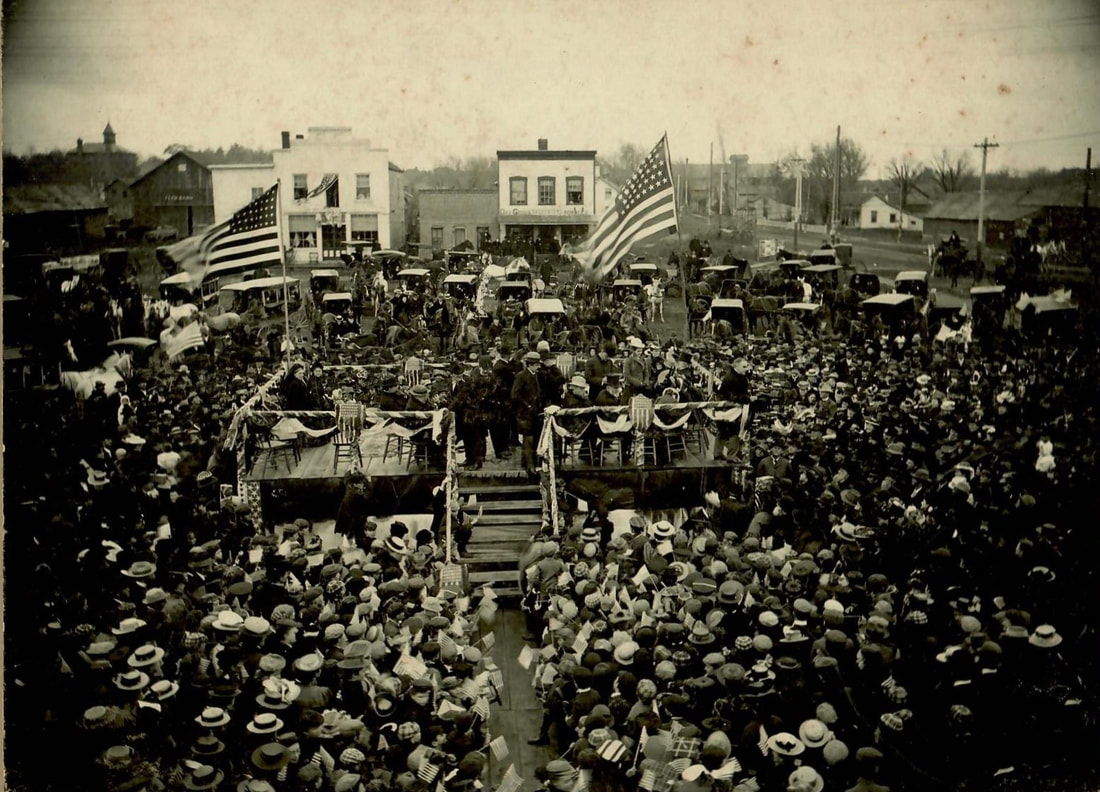History of the Illinois Central Passenger Depot
Before 1892, the Illinois Central Station at Independence was a combined freight and passenger depot. A long platform ran across the entire north side of the building and projected some distance beyond it. The platform was a high one, on the level with the floor of a freight train, and was located on a side track between the building and the main track. This track was most of the time filled with cars. Passengers had to cross the sidetrack to board the passenger trains, making it not only inconvenient but dangerous.
Passenger traffic began increasing dramatically as the popularity of harness racing at the new Rush Park track grew. In October 1891, local officials and 77 citizens filed a petition with the railroad commission that would require the Illinois Central Railroad (ICRR) to build a new passenger depot. Two months later, the petition was approved and the ICRR revealed plans to erect a dedicated passenger depot on the south side of the tracks, north of Market Street (10th St. NE), and between Chatham (2nd Ave. NE) and Walnut (3rd Ave. NE) streets. An additional track would be laid just north of the building for passenger train service.
With the promise of a new passenger depot, Charles W. Williams, owner of harness racing horses Allerton and Axtel and of the Rush Park Race Track, financed the construction of the Rush Park Electric Street Railway. It was built in the summer of 1892 and extended from the new Illinois Central Depot to the Iowa Hospital for the Insane. It passed through downtown Independence where Williams had erected the Gedney Hotel and Opera House. From there, it crossed the bridge at the Wapsipinicon Mill and continued west to the race track before terminating at the hospital.
In 1892, a huge racing event that would draw crowds from all over the country was scheduled for the end of August. The new depot was not quite finished, but the local station agent, W.C. Sanford, put it into service early to accommodate the influx of people. It officially opened just a week later on September 1, 1892. The building was constructed of brick and was similar in design to the passenger station at Rock Island, Illinois. It was the company's intention to make it the finest of any in Iowa along the Illinois Central route, aside from the depot at Dubuque. It was placed between 2nd and 3rd Avenues NE in such a way that the stoppage of trains would not block the streets. Covered platforms extended on each side of it to the line of those streets. The building was landscaped with flower beds and small trees, making it one of the most attractive depots on the Central Line.
Many notable figures came to Independence by way of train. On October 16, 1899, President William McKinley stopped at the Independence Depot to give a speech. Similarly, on June 2, 1903, President Theodore Roosevelt stopped in Independence and addressed the crowd from the back of a train as seen in the photo above. His speech can be found HERE. Susan B. Anthony, Carrie Nation, and General Tom Thumb are a few of its other famous visitors.
Passenger traffic continued to grow. It was particularly heavy in the early 1900s when travel by train was still preferred over automobiles due to the condition of many of the roads. At one time, there were 14 passenger trains a day through Independence. This began to change in the late-1920s and the number of passenger trains started a gradual decline. Soon, travel by bus became popular and travel by air was an option. In the 1960s, Independence was down to two passenger trains per day. “The Land of Corn” from Chicago to Waterloo was discontinued on August 4, 1967. The last passenger train, “The Hawkeye,” was discontinued on May 1, 1971.








